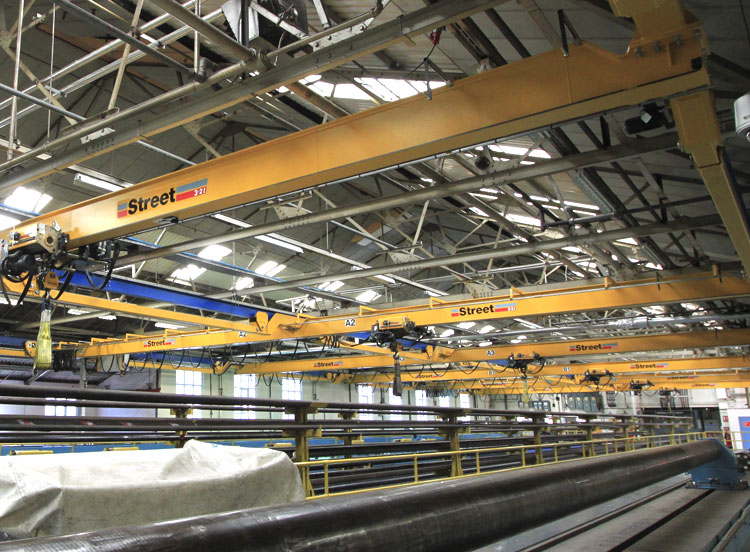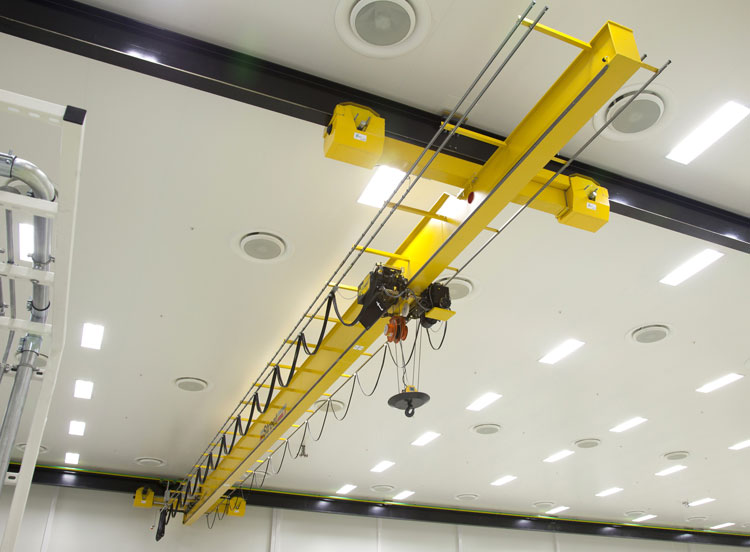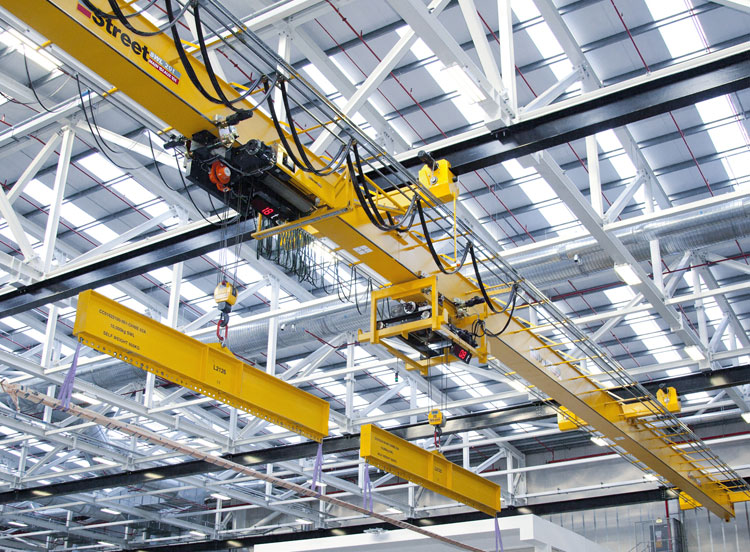Single span under-slung cranes
Street single span underslung travelling cranes are designed with rolled section beams or fabricated box beams depending on capacity and span. A variable girder connection design allows us to optimise the available height of lift in each application. The suspended end carriage design introduces the possibility of cantilevers (lateral overhangs) to provide increased hook coverage by allowing the hoist and load to travel beyond the runway track line. Street underslung travelling cranes can be specified with a variety of operator control systems including control from a push button pendant suspended from and mobile across the crane bridge or fully remote radio control. Street underslung travelling cranes may be equipped with either Street ZX wire rope hoists or Street LX chain hoists and most have capacities of 10 t or less because of the limitations of supporting structures.
Advantages of Street single span single under-slung cranes with ZX hoists.
- Extra hoist brake safety.
- Additional protection against overloading.
- No external hoist gears.
- Double band rope guide.
- Hoist gear inspection facility.
- Unique fail-safe hoist drum.
- Variable speed travel and traverse.
- No external trolley gears.
- Sturdy trolley side rollers.
- Trolley reaction roller obviates the need for counter weight.
For more details of these advantages go to ‘ZX unique features’



